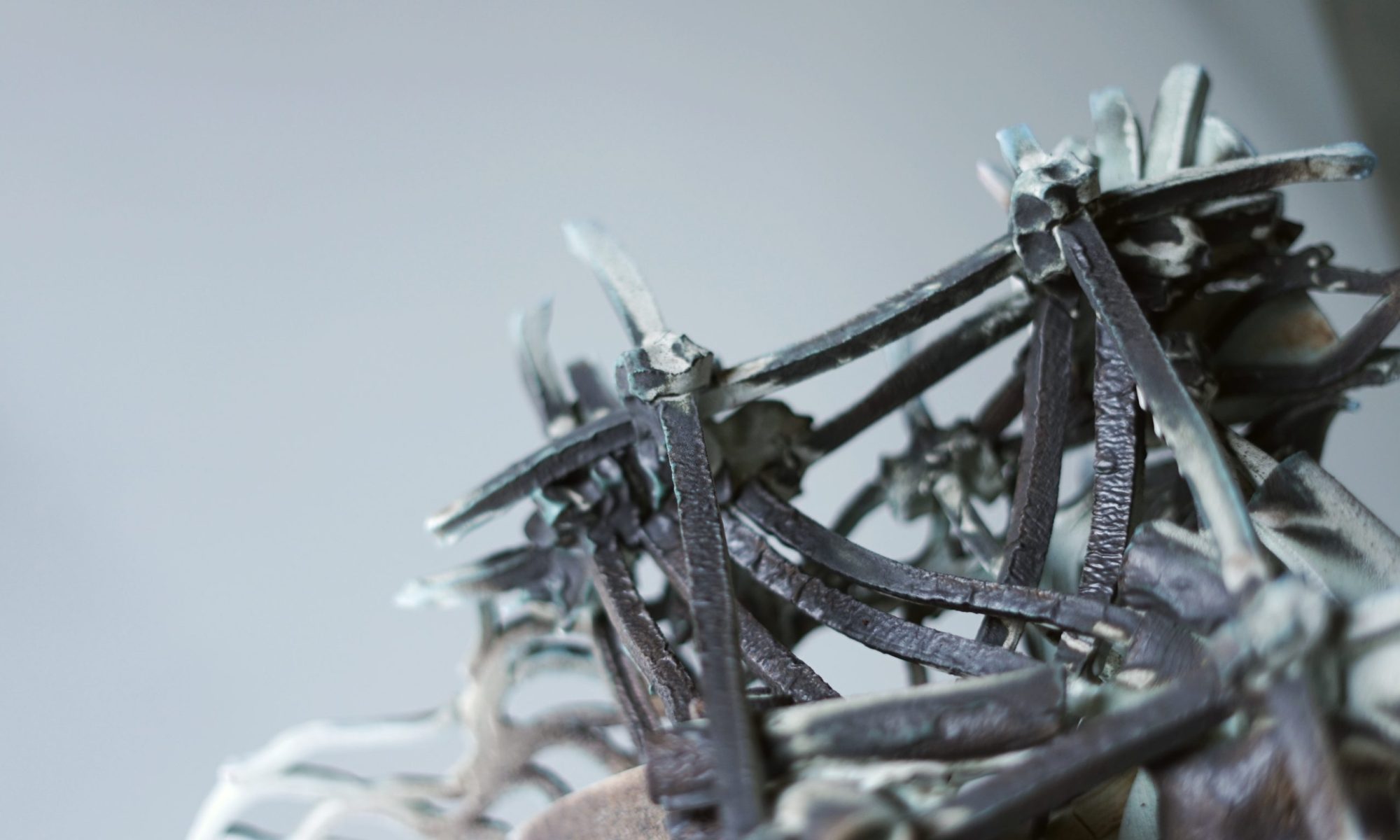Fragile Architecture 2025
This series continues my ongoing exploration of fragile architecture through sculptural porcelain. These contemporary ceramic works are quieter, more distilled. Made in handbuilt porcelain, they carry a lightness—sometimes almost translucent—that contrasts with their architectural references. I was thinking about how buildings hold tension, how they carry weight, and what happens when that balance is disturbed.
Each piece is like a small ceramic construction, often teetering on the edge of collapse or softening into itself. I’m interested in that moment when structure begins to give way—when what’s solid becomes uncertain. Porcelain sculpture lets me get closer to that feeling. It warps, slumps, cracks—it reacts. And I don’t try to stop it.
The works go through multiple firings—usually three or four. After each one, I rebuild, adjust, and glaze again. The slumping and transformation happen in repetition, gradually layering traces of collapse and rebuilding. Each kiln firing becomes part of the piece’s memory—what it has survived, what has changed, what has melted away. Nothing is fixed; everything shifts slightly each time.
These are not models of buildings. They’re more like ceramic fragments, or spatial suggestions—folded, bent, pierced. They might resemble parts of a curtain, a beam, or a broken screen. But they’re not about reproducing anything. They’re about presence and fragility, and about finding structure in collapse—a kind of balance within distortion.
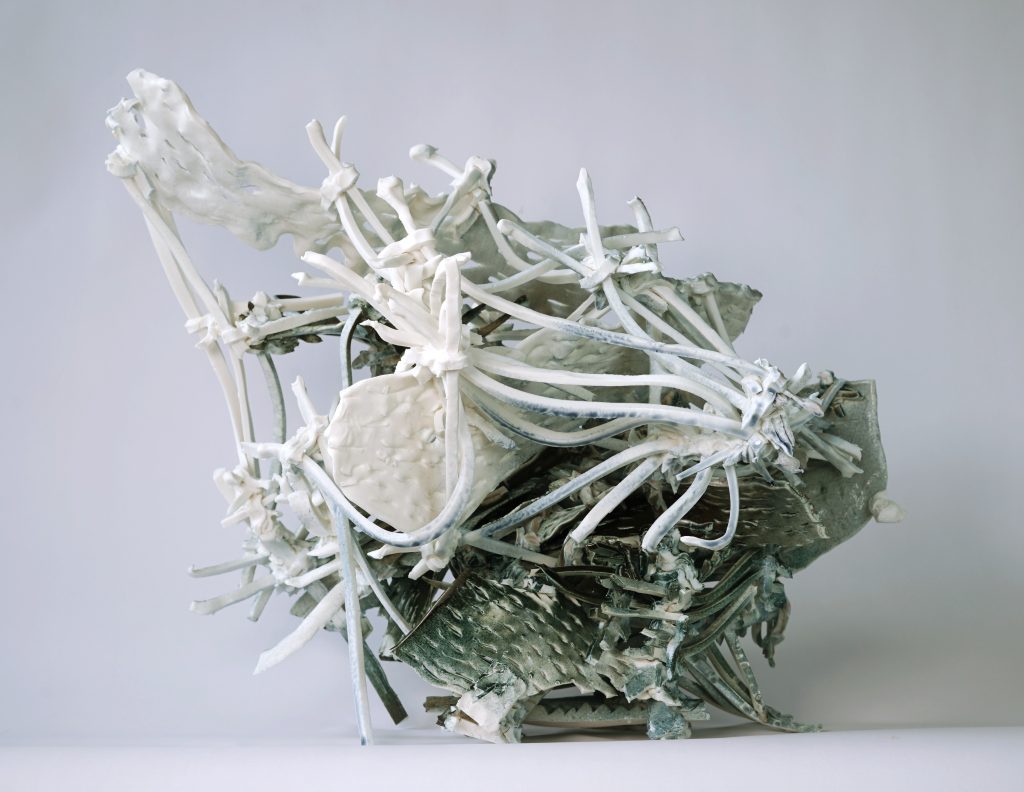
Merja Nieminen
Untitled AA
2025
Porcelain, slips, glazes, oxides
Electric kiln fired in Billnäs Finland
H48cm x W50cm x D30cm
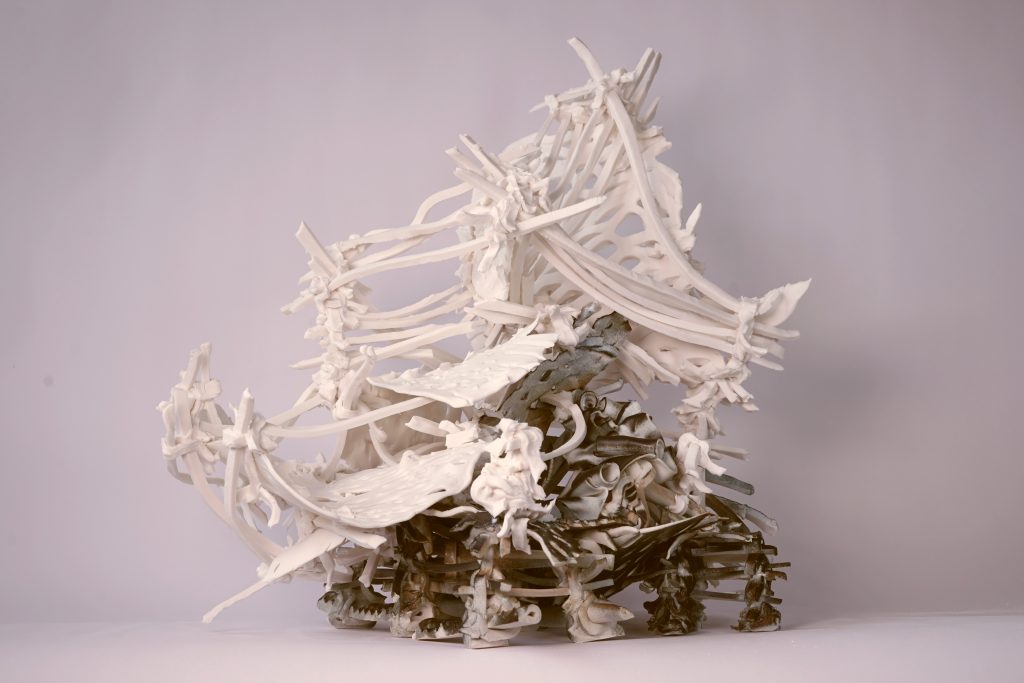
Merja Nieminen
Untitled BB
2025
Porcelain, slips, glazes, oxides
Electric kiln fired in Billnäs Finland
H50cm x W50cm x D30cm
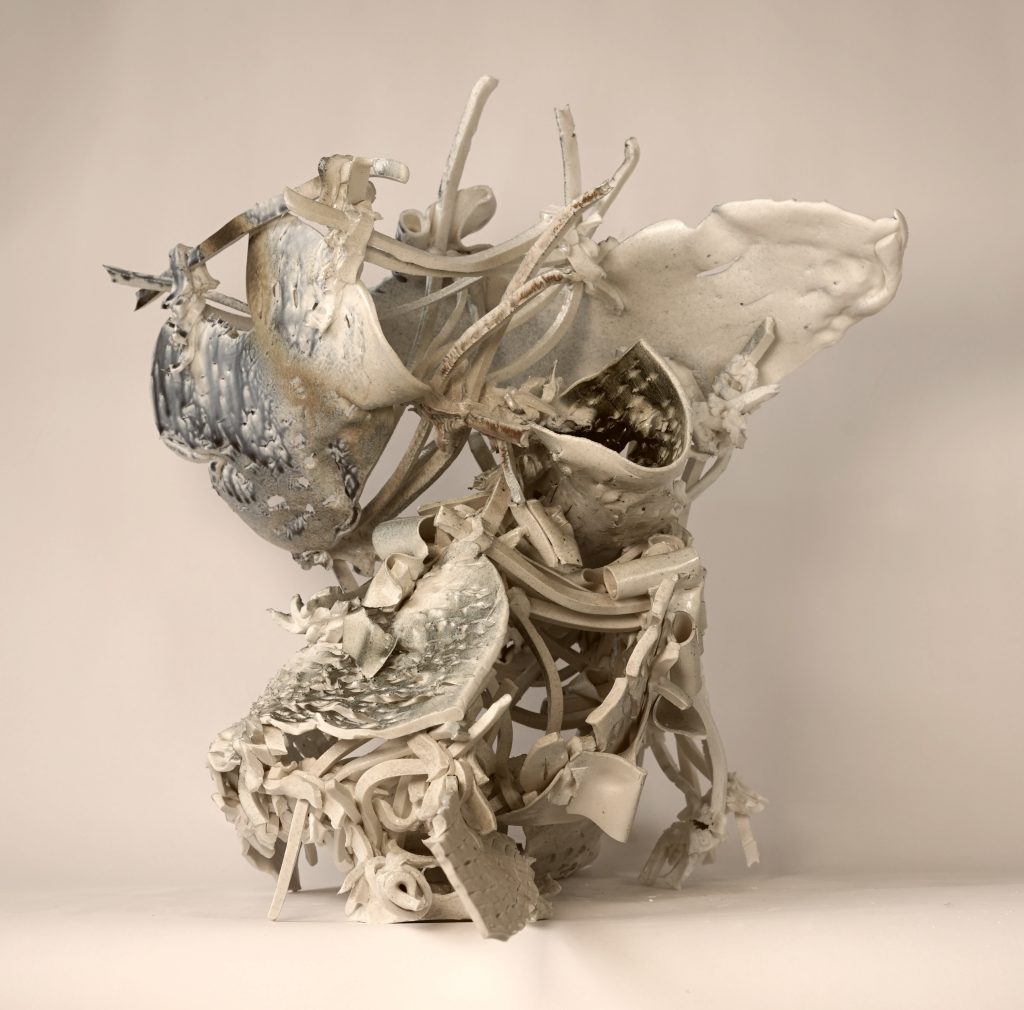
Merja Nieminen
Untitled CC
2025
Porcelain, slips, glazes, oxides
Electric kiln fired in Billnäs Finland
H50cm x W50cm x D30cm
Shigaraki Residency 2024– Beginnings of Fragile Architecture
This body of work was created during my 4 month residency at the Shigaraki Ceramic Cultural Park in Japan, and marks the beginning of my Fragile Architecture series. I had worked with wood kilns before, but in Shigaraki I had the chance to dive much deeper—there was time, space, and support to really explore what woodfiring could do.
I used local materials: Shigaraki’s own stoneware clays and a special porcelain developed by the research center. Most of the pieces were fired just once, some in gas kilns, but many in wood kilns. I was testing how these clays respond to heat, flame, and time. There’s a rawness to these works. They hold the marks of the kiln, the ash, the flame paths, the stress of the firing. They’re less controlled, more open to chance.
The architectural references in this series come from Kyoto’s temples—the heavy wooden beams, the layering of roofs, the tension held in what looks still. But just as much, I was looking at construction sites in the city: scaffolding, temporary supports, things half-built and half-demolished. There’s something about that chaos and in-betweenness that really stayed with me.
In these early pieces, the collapse hadn’t fully arrived yet. Most of the forms still try to hold themselves upright. But near the end of the residency, I began to let things fall more—especially in the last few firings. That’s where the theme of collapse started to come in, both physically and conceptually. The real slumping began later, but the seeds were planted in Shigaraki.
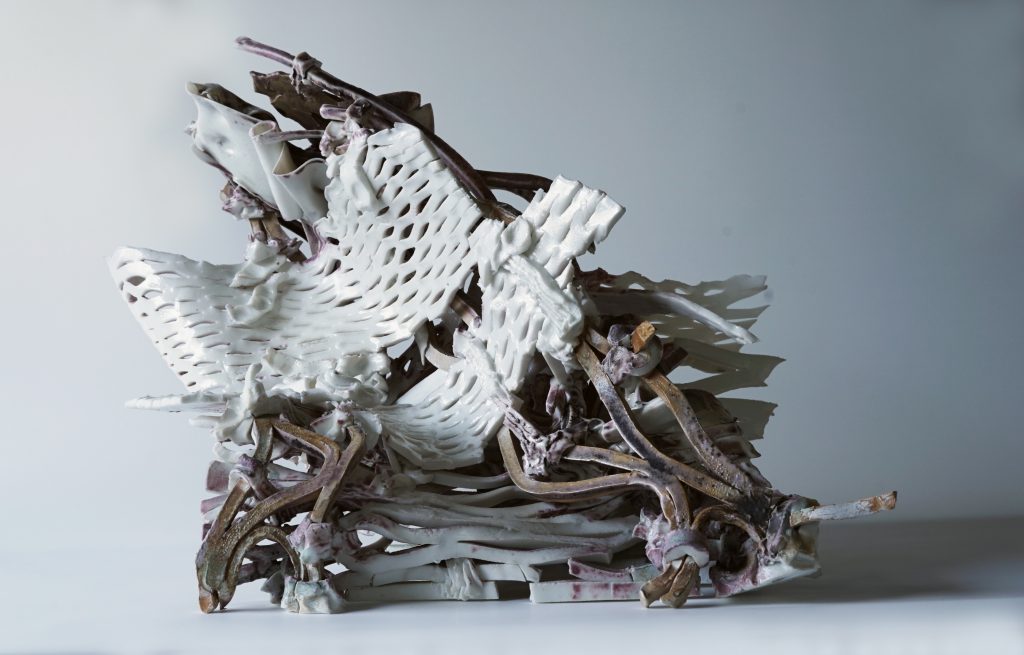
Merja Nieminen
Dreams of ruins: white has fallen and all is still
2024
Porcelain, slips, glazes, oxides
H42cm x W50cm x D30cm
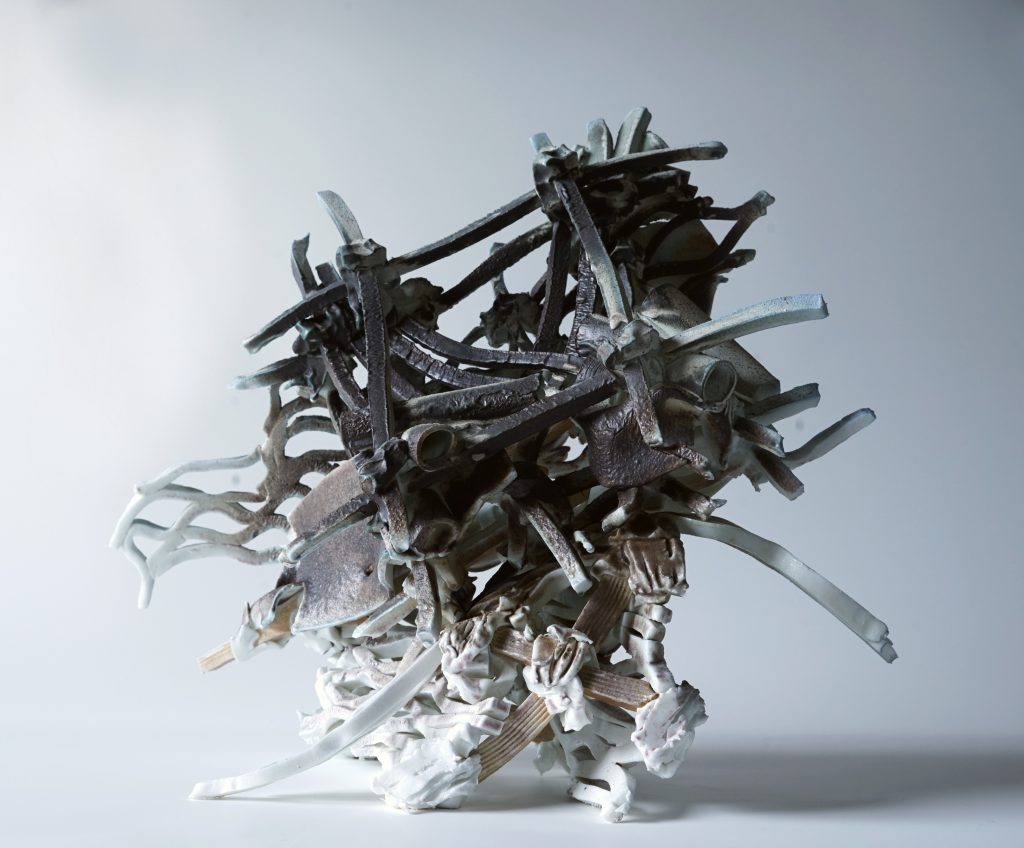
Merja Nieminen
Dreams of ruins: white has fallen and all is still
2024
Porcelain, slips, glazes, oxides
H42cm x W50cm x D30cm
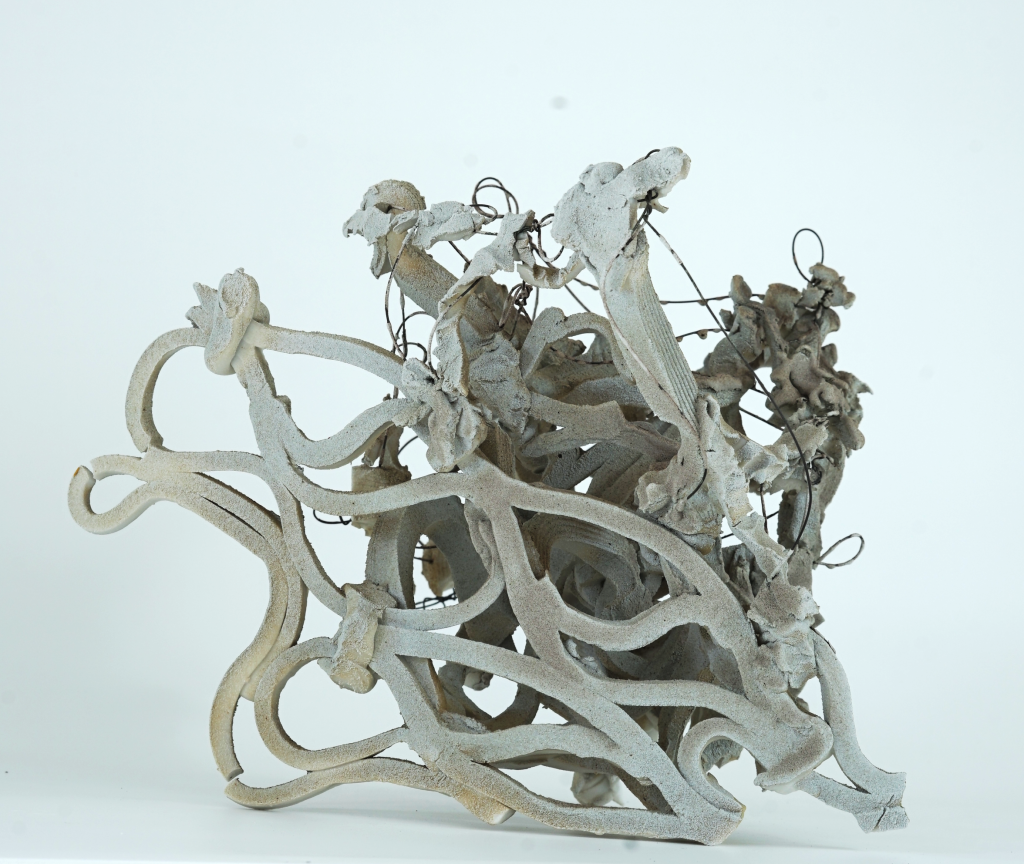
Merja Nieminen
9 hundred thousand years underground
2024
Porcelain, slips, glazes, oxides, metal wire
H23cm x W23cm x D22cm
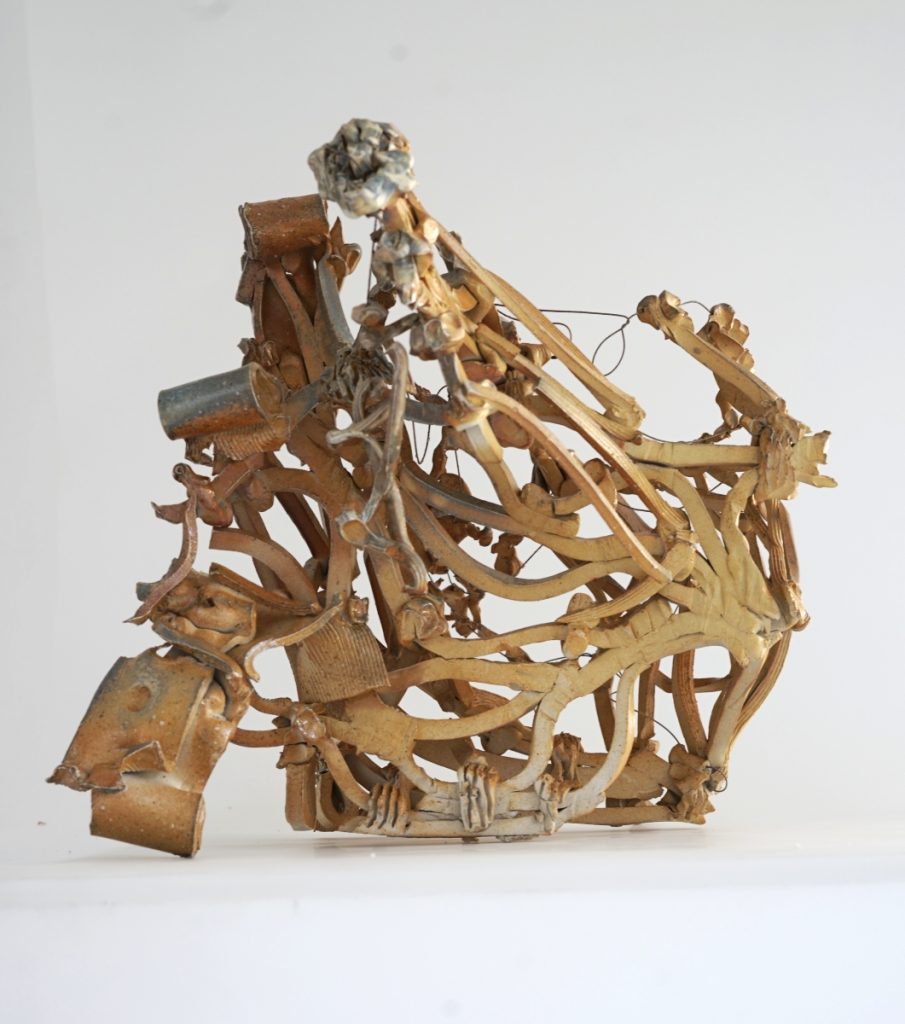
Merja Nieminen
Untitled D
2024
Stoneware, slips, glazes, oxides, metal wire
H43cm x W33cm x D26cm
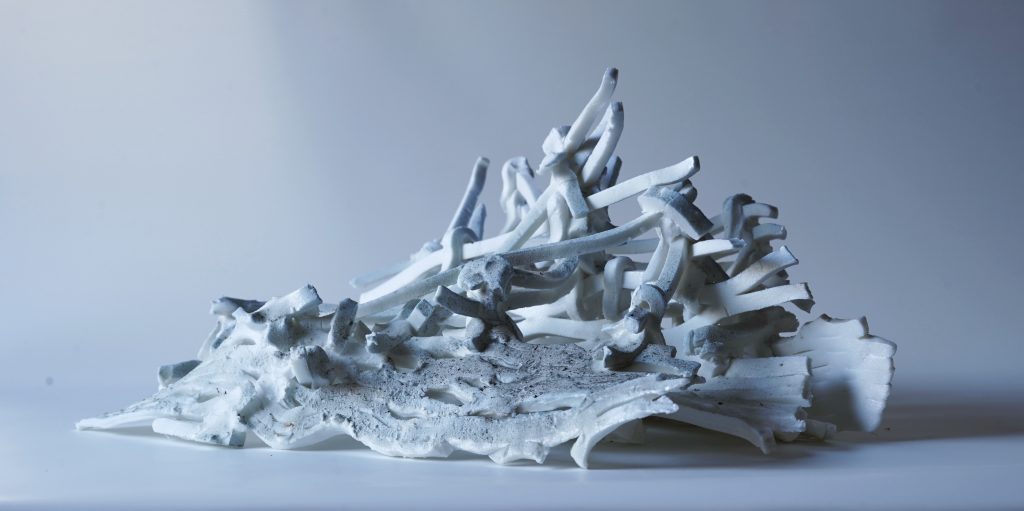
Merja Nieminen
Underwater ruin 1
2024
Porcelain, slips, glazes, oxides
H22cm x W32cm x D19cm
